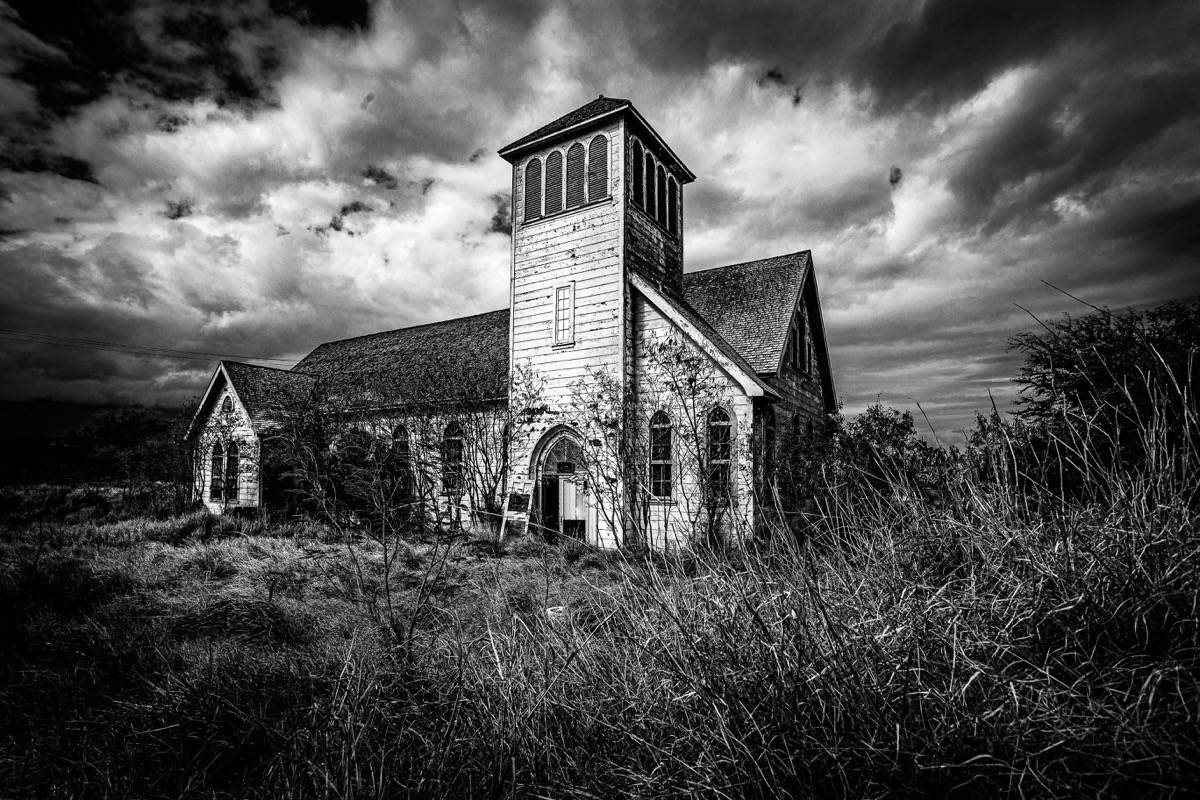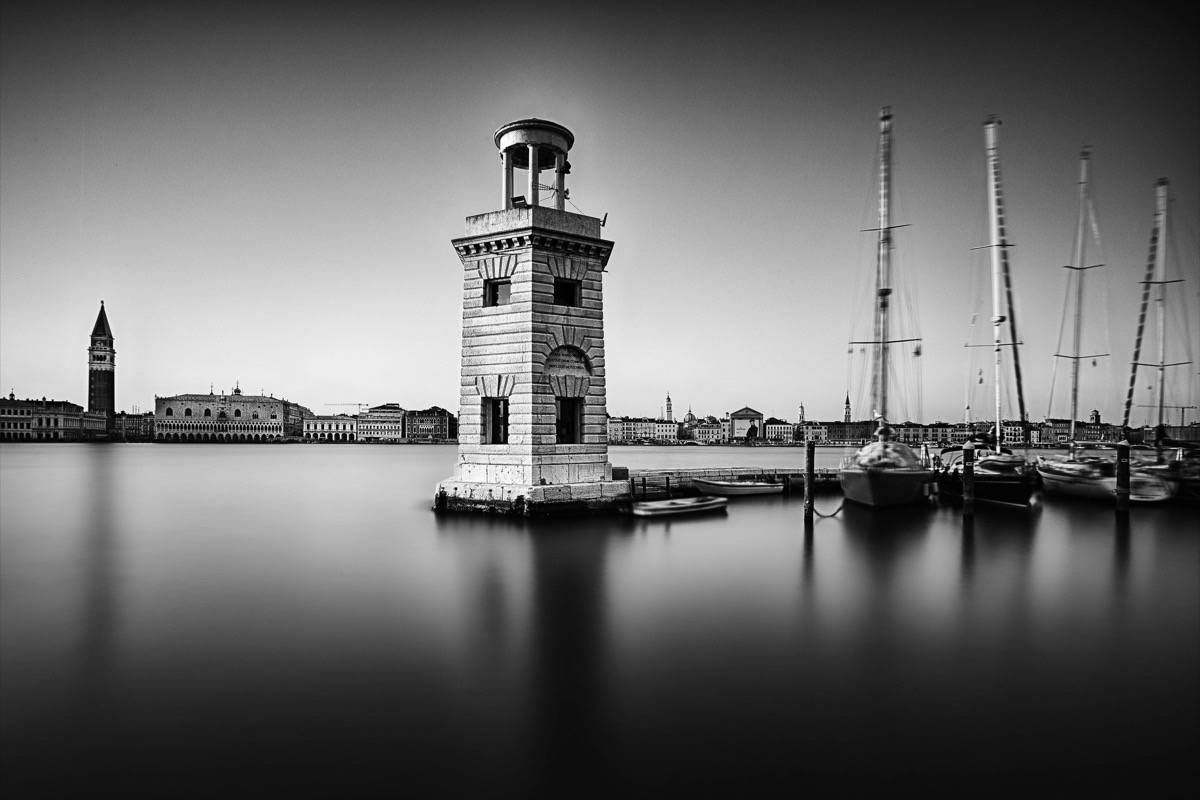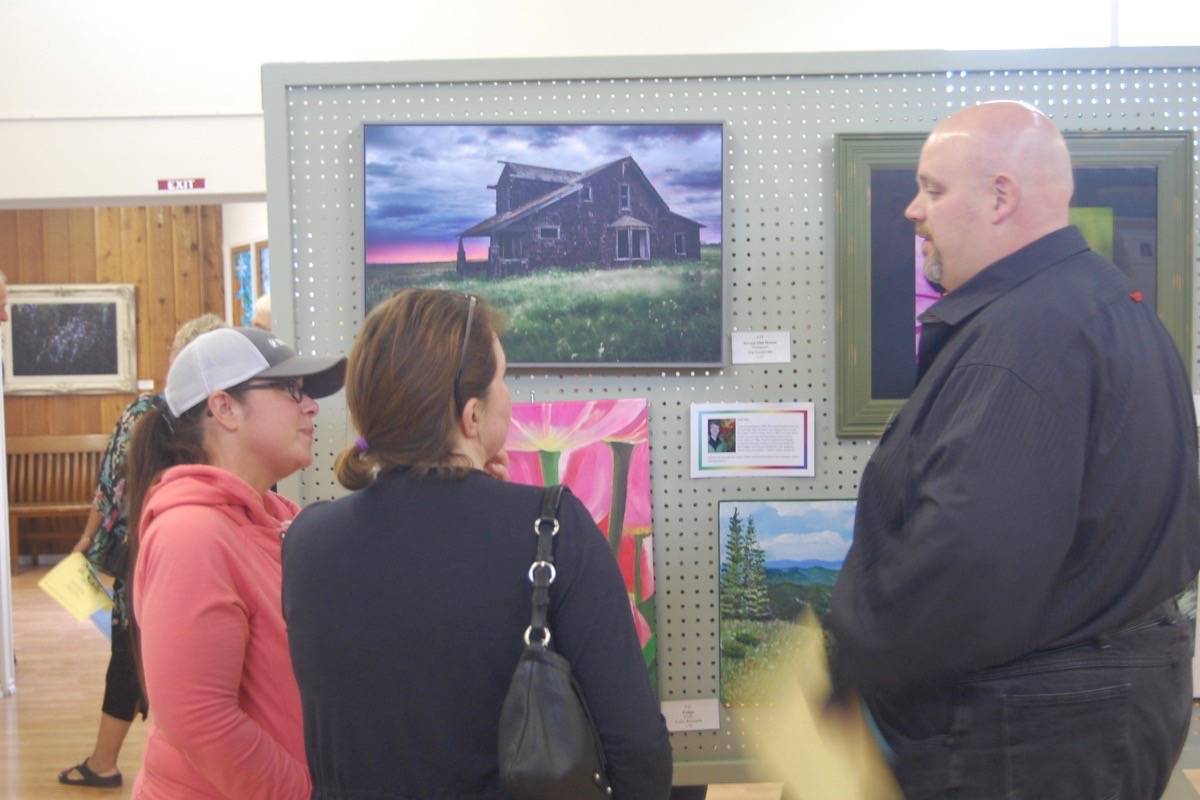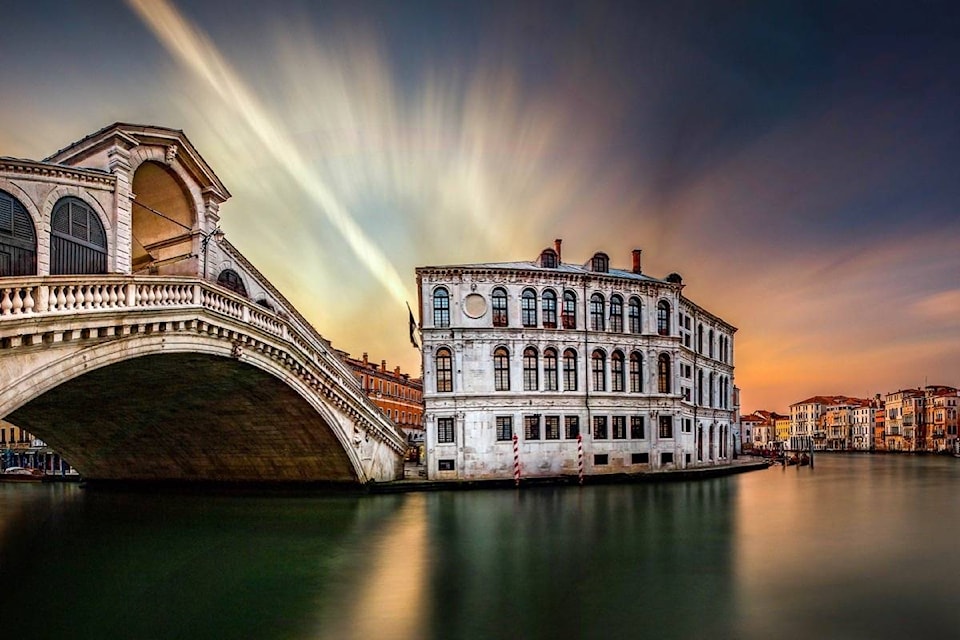This year’s Art Exposed exhibition at the Kamloops Art Gallery featured the work of several local artists, and when the event closed in March, Ashcroft’s Guy Lundstrom was honoured with the Artist’s Choice award for his work “Rialto Bridge and the Grand Canal”.
The work was chosen from among the more than 230 pieces of art that were on display during this year’s exhibition, representing work from more than 130 artists of all ages in the Thompson-Nicola area. Lundstrom also received an honourable mention when the Jurors’ Choice prizes were awarded; an impressive showing for an artist making his debut appearance at the exhibition.
“This was my first year at Art Exposed,” says Lundstrom, who is a frequent exhibitor at the annual Ashcroft Art Show, which has been postponed this year. “I went last year when it was on, and it was wonderful. They did such a nice job I wanted to be part of it this year, so I signed up for their newsletter.”
Artists are only able to enter a maximum of two pieces, and Lundstrom says it was hard to decide which two he would submit.
“I had things critiqued by different people, and there were a couple people really liked. I liked them too, so I went with those. I didn’t think there’d be any other works in the show like that, and thought I’d be competing against painters and sculptors, but there were quite a few photographers there this year, some quite spectacular ones.
“I’ve had the pictures up on my wall and I still enjoy looking at them. Usually I start finding flaws, but these ones turned out good.”
The two works he submitted were photographs of Venice, which he visited in 2018. He calls the city spectacular from a photographer’s point of view.
“There are people pictures, there’s architecture, there are scenes and colours. Everything seems to be art there. Every piece of stone has carving on it of some kind or some significance.
“And it’s a very open place, very safe. There are always lots of angles, always another space to get pictures. In the morning, before everything has opened, there aren’t a ton of tourists, so you can get out and get to places without a lot of people around. I really enjoyed it.”
Lundstrom was in Venice as part of a workshop specifically for photographers. “It was a small group of 10 people arranged by two professional photographers. We had a schedule: we were up before daylight to get pictures, then had breakfast and classroom time, plus time for yourself.
“The nice thing when you do workshops with locals is that they know places you wouldn’t necessarily go to. You see San Marco Square, then go through two or three alleys and get a different angle of it.”
He adds that he also got to see a side of Venice that many visitors don’t, such as a different view of the city’s famed gondolas.
“We were there right after flooding season, and a cruise ship came in. The day before, all the gondoliers had been in half-uniform and there was only one in each gondola. Next morning [after the ship arrived] there were no gondolas around, and then they all came back in their striped shirts and hats, two people in full regalia on each gondola, and headed for the cruise ship. The whole place is geared to that.”
Lundstrom, who has been a photographer for two decades, describes himself as an “enthusiastic amateur”, somewhere between an amateur and a professional. “I’ve been working to get better, take pictures that make me happy.”
His first camera was a film camera, and going from that to digital was an adjustment. However, he notes that anyone interested in photography can learn faster with digital.
“In the old days you’d take 24 pictures, send them away, they’d be back in a week, and there might be one you wanted. And unless you were meticulous in taking notes you wouldn’t know what the differences were.
“Today you can take 20 or 30 pictures, then come home and look at them while you remember what the lighting was like. The settings tell you information, so you don’t have to guess. Digital helps with technical points like depth of field and lighting. You can see the differences right away.”
One thing digital doesn’t do, he notes, is help with composition. “Not every picture you take is perfect. Something I like about digital is that if I come across a scene I like I can take 40 pictures from different angles. Any camera can take a great photo in the right circumstance if it’s used in the right way.”
Lundstrom does some manipulation to his photographs — “Some more than others” — but notes that everything in photography has been manipulated for years.
“Ansel Adams [whose career flourished from the 1920s to the 1950s] had a table with 50 different lights so he could over- or underexpose his photographs. It’s a skill that takes years to learn, but you can learn digital manipulation in a year. Colour balance, contrast, sharpening: most cameras will do some of that for you.
“All the pictures you take digitally are in colour. Anything that looks black and white has had to be manipulated. I’ve started to really like black and white. It makes it more artistic, and I can play with light or increase the contrast a bit more.”
While the two works exhibited in Art Exposed were of Venice, Lundstrom also likes photographing places that are a bit more off the beaten track. “I did a workshop in Alberta on abandoned barns and buildings. I’m fascinated by those. They’re always interesting.
“I was driving past a sugar refinery on Maui that they were starting to dismantle, and down the road was an old school. There were walking paths, and I could see a steeple sticking up in the distance. It was an abandoned church, and I thought ‘Nice, I’ll see if I can get a picture of it.’
“I could see other buildings in the background, but I just wanted the church, so I changed my point of view.”
He adds that there are also lots of things to see around here, and lots of places to get pictures. He was a participant in one of the rafting trips organized by Kumsheen Rafting for people who want a closer view of places only visible or accessible from the river.
“We were able to see places like the old McAbee site, and the rafting trip allowed us to stop there. It was a nice way to do it.” There are also a lot of walking paths in the area, which Lundstrom notes offer some wonderful opportunities for photographers.
“There’s the lighting, hoodoos, the river. I like the church at Spences Bridge. You can see the waterfall from there and get to the falls. I often go past Sundance Ranch, where they have the ranch and horses, and past there you have mule deer and sheep, nice rolling hills and sky.”
Lundstrom says he usually has a camera with him. “I don’t always have all my lenses, but I have a digital SLR that’s easy to keep in the truck.” It’s a habit born from experience of the shots that got away.
“It’s happened enough times, that I’ve missed something because I didn’t have a camera. When I lived in Fort Nelson I didn’t have a camera with me when a big lynx crossed the road. We stopped, and it lay down like a cat just outside my truck.
“It was a beautiful sight but it was before cellphones, and it broke my heart not to have a camera with me. I haven’t travelled anywhere without a camera since then.”
editorial@accjournal.ca
Like us on Facebook and follow us on Twitter



